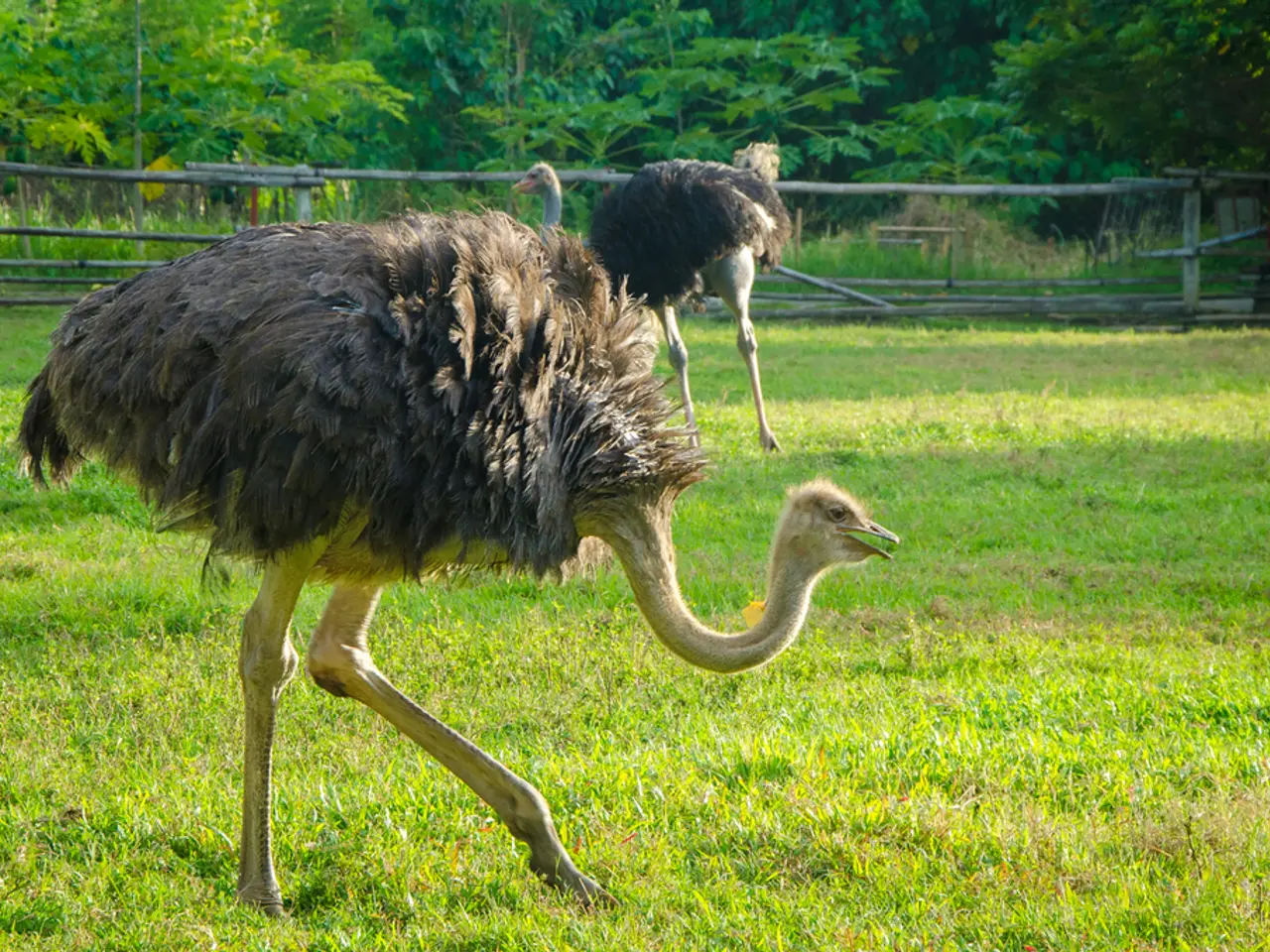A Comparison of Emu and Ostrich: Size, Speed, and Habitat
In the vast expanses of Africa and Australia, two remarkable flightless birds have made their homes - the ostrich and the emu. These giants of the avian world share a common ancestor, Lithornis, a prehistoric bird that was capable of flight and scavenged for food like modern vultures.
The common ostrich, standing up to 9 feet tall and weighing over 300 pounds, reigns as the largest flightless bird. With their loose, fluffy feathers, they lack the stiff structure necessary for flight, but they make up for it with incredible speed. Ostriches can reach speeds of up to 60 mph in short bursts, making them one of the fastest birds on land. Their eggs, weighing up to 3 pounds and housed in a thick shell, are incredibly strong and can withstand even the toughest predators.
On the other side of the world, the emu stands slightly smaller, reaching heights of around 5 feet and weighing between 80 and 130 pounds. These solitary creatures, native to Australia, are known for their long legs that allow them to reach speeds of about 30 mph. Interestingly, unlike the ostrich, emus have three toes, providing them with more stability on rough terrain.
The eggs of the emu, a dark green hue, blend seamlessly into their surroundings, offering a natural camouflage from predators. In emu families, it's the male who takes on the primary role of incubating the eggs and raising the chicks.
Both species have adapted to their respective environments. The common ostrich can be found across a broad range of African landscapes, while the Somali ostrich prefers drier, more arid regions. The emu, on the other hand, is a staple of the Australian outback, with both male and female emus sharing similar brownish-gray plumage that helps them blend into their surroundings.
The Somali ostrich, with its distinct blue neck and legs, stands out from the common ostrich, which sports pinkish skin. Male ostriches are also easily identifiable with their striking black and white feathers, while females tend to have duller brown coloring.
These fascinating creatures began their independent evolution after diverging from their common ancestor Lithornis around 50 to 60 million years ago. Today, they belong to a group of flightless birds called ratites, which also includes kiwis from New Zealand and rheas from South America.
Whether it's the speedy emu or the majestic ostrich, these flightless giants continue to captivate us with their unique adaptations and resilience in the face of evolution.
Read also:
- Peptide YY (PYY): Exploring its Role in Appetite Suppression, Intestinal Health, and Cognitive Links
- Toddler Health: Rotavirus Signs, Origins, and Potential Complications
- Digestive issues and heart discomfort: Root causes and associated health conditions
- House Infernos: Deadly Hazards Surpassing the Flames








